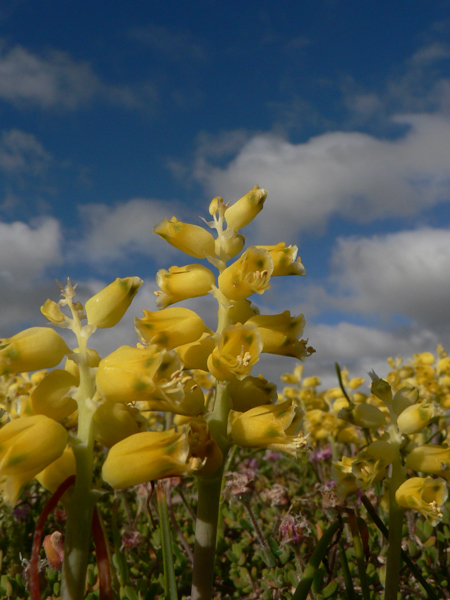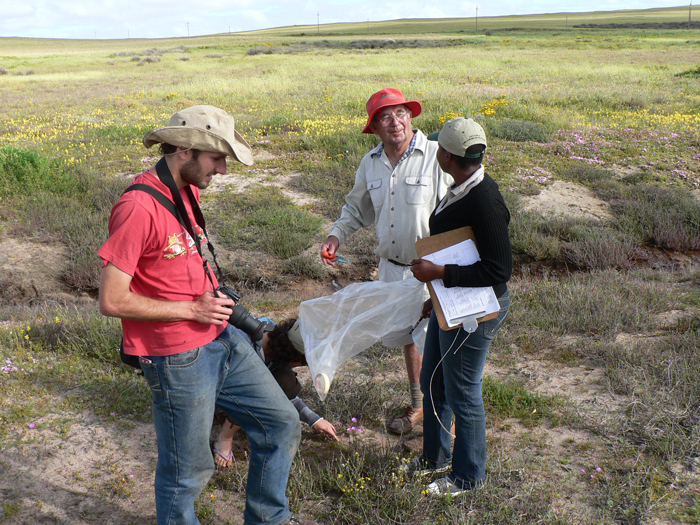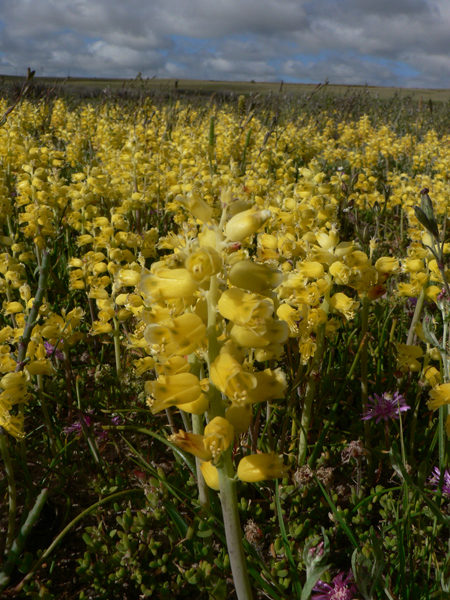Extinct, then rediscovered. Lachenalia mathewsii stands quite tall at 10-20 cm and produces beautiful bright yellow flowers in a spike with a spicy scent that attracts honeybees. The entire genus of Lachenalia is endemic to South Africa. They are commonly known as “viooltjies” (the Afrikaans word for ‘ little violin’) as they look like little violins. Written by: Dewidine van der Colff, Botanical Society employed Red List scientist with the CREW programme

Lachenalia mathewsii, once thought to be extinct, was rediscovered in 1983. Currently, the species is only known to exist on two sites – one on a farmer’s property where it is potentially protected, and the other on municipal grounds just outside Vredenburg where there might be development plans in the near future.
This species is currently listed as endangered according to the IUCN Red Listing system. Its main threats have been identified by Custodians of Rare and Endangered Wildflowers (CREW) volunteers visiting the sites and collecting threat and population data of this precious plant. The main threats are habitat loss as a result of potential development, habitat degradation due to grazing pressure, and fire exclusion which is needed to rejuvenate the species.
Previously, Lachenalia mathewsii‘s sunny disposition could be seen within seasonally moist Cape inland salt pans in Saldanha granite strandveld but the species has gone extinct in all of its historic localities.

Urgent attention should be given to Lachenalia mathewsii, and searches for more populations might ease its plight. However, the CREW project manager, Ismail Ebrahim, and our dearest volunteers, Oom Koos and his wife Tannie Elise, have been searching for years without much success. Our CREW FoTH (Friends Of Tygerberg Hills) team has also been very busy surveying the area without much luck. We hope that future searches may yield some fruit, however, based on the available suitable habitat, the hope of finding more sub-populations are very low.


We aim to ignite the passion for conserving the little bits of natural veld that still remain within areas of high agricultural activities. For the future of biodiversity conservation and economic growth in South Africa, we really need to find the perfect balance as this relationship is unfortunately not a mutual one. We need nature more than nature needs us, so we need to conserve these precious species, their natural habitats and ecosystems so that one day future generations may experience the violins of the veld.

Many of the species of plants found in the Cape floristic regions are facing a similar threat, and public awareness is a vital part of protecting our precious plants, such as the Lachenalia mathewsii.
The Botanical Society of South Africa is a long-standing partner of CREW and many of our members volunteer with CREW. Become a member and get involved in citizen science.
To comment on this story: Login (or sign up) to our app here - it's a troll-free safe place 🙂.![]()






